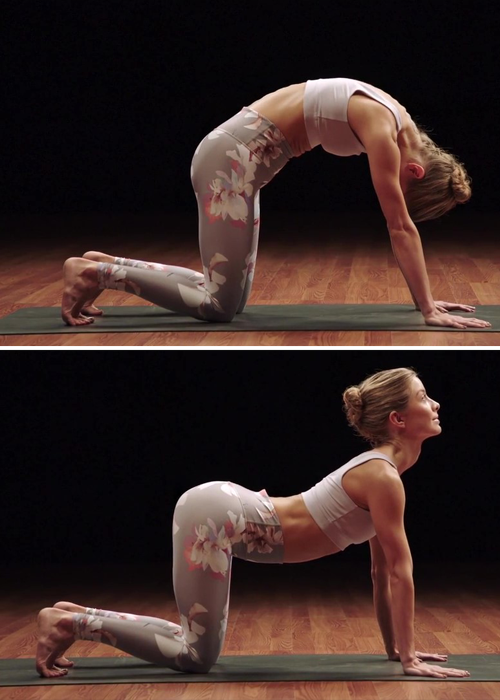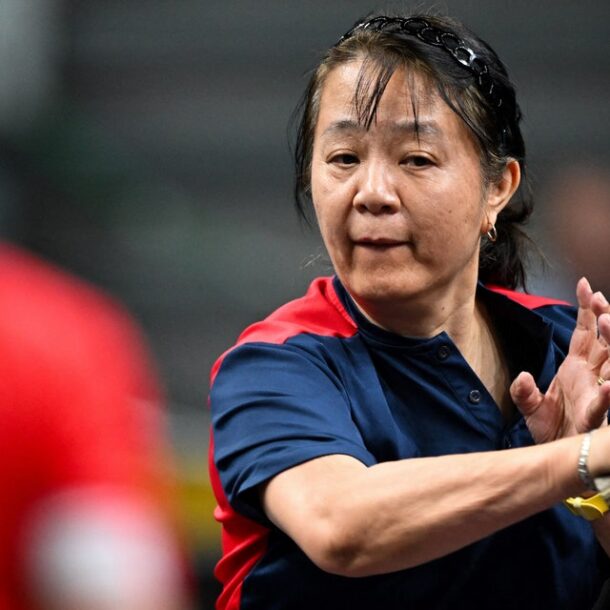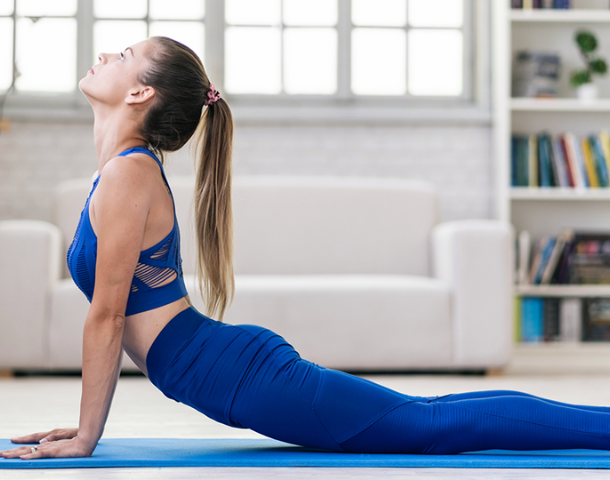Cat-cow pose is a great warm-up or cool-down posture. It feels wonderful first thing in the morning, or after a long day spent sitting, or as active recovery from a tough workout.
This gentle flow is appropriate for yoga students of all levels and is excellent for the spine.
While technically two poses, cat and cow are almost always paired in yoga, with cow pose (Sanskrit translation: bitilasana) on the inhale and cat pose (marjaryasana) on the exhale.
As such, cat-cow stretch is a good way to start learning vinyasa yoga, which links your movements with your breath.
Cat-Cow Pose: Step-by-Step Instructions
In yoga, certain poses are paired together because they’re complementary, which promotes balance. You might see child’s pose paired with a headstand, or a seated forward fold after a full wheel pose.
Cat pose and cow pose are teamed up for the same reason: because they move the spine through its full range of extension and flexion.
While you can do cat or cow pose independently, your spine will thank you if you do both. Cat pose rounds your back (like a cat’s) to give it a good stretch, while cow pose arches your back, dropping your belly to stretch out your front side.
Inhale: Cow pose
- Get down on all fours, with your knees under your hips and your hands under your shoulders. Your back should be flat, your gaze toward the floor, and your neck long.
- As you inhale, lift your tailbone and chest toward the ceiling while dropping your belly toward the mat.
- Keep your shoulders away from your ears, shoulder blades broad across your back, and head in line with your torso.
- Exhale into cat pose.
Exhale: Cat pose
- Start in cow pose.
- As you exhale, round your back, tuck your tailbone, and curl your chin toward your chest.
- Keep your shoulders and knees in place.
- Inhale into cow pose.
- Repeat this flow for up to 10 breaths, or longer if desired.
Beginner Tips for Doing Cat-Cow Pose
Once you get the hang of cat-cow stretch, you can start to customize the flow.
“Cat-cow is one of the classic yoga postures that should be used for exploration,” says Stephanie Saunders, BODi’s vice president of fitness programming. “Sometimes changing the placement of the arms, the angle of the hands, or the width of the knees can open up new possibilities and give you a sense of where you are in your practice today.”
Here are some other pointers for cat-cow:
- Start slowly, and never force your spine. Try to smooth out your movements and make them last the whole length of your inhale or exhale.
- Focus on one section of your spine at a time. Use cat-cow to work on pelvic tilts or engage your transverse abdominis, suggests Saunders.
- After you warm up, you can go deeper in cow pose by bending your elbows. Deepen cat pose by lifting onto your fingertips and/or shifting your hips back a few inches (think: a cross between cat pose and child’s pose).
- If your back is tight, you may feel more movement in your shoulders than your spine. Pressing your hands down into the mat helps keep the shoulders broad and stable, so you can work on opening your spine.
Cat-Cow Pose Modifications
Use cat-cow as your foundation, then keep going. “Adding a rotation motion, including a head roll and wagging the tail, are all great variations on the classic,” says Saunders.
- Want more options? Saunders suggests turning your hands in different directions (to stretch your wrists and forearms), opening your knees wider than normal, or placing blocks under your hands to increase range of motion.
- Make cat-cow more challenging. “Starting from a bear or hover position — in which your toes are tucked and your knees float an inch or two off of the mat — will add core engagement and can help increase mobility in the pelvis,” says Saunders.
- If your wrists hurt in this flow, place your forearms on the floor or make fists.
- If kneeling is uncomfortable, sit in a chair. Rest your hands on your knees, and move your spine from this position.
Benefits of Cat-Cow Pose
The main benefit of cat-cow pose is spinal flexibility, but this flow has even more to offer.
1. Increases mobility of the spine
Cat pose takes your spine into full flexion, while cow pose places it in spinal extension, warming the whole spine through a full range of motion.
2. Stretches the core, back, and chest
Cat pose stretches out the back of your body, including your neck. Cow pose opens up the abdominal muscles and chest.
3. Creates awareness of your posture
Cat-cow pose brings attention to your spine, promoting awareness of its proper alignment.
4. Teaches “vinyasa“
Cat-cow stretch is an easy way to learn to pair breath and movement, setting the “tempo” for your breath during your practice, says Saunders.




